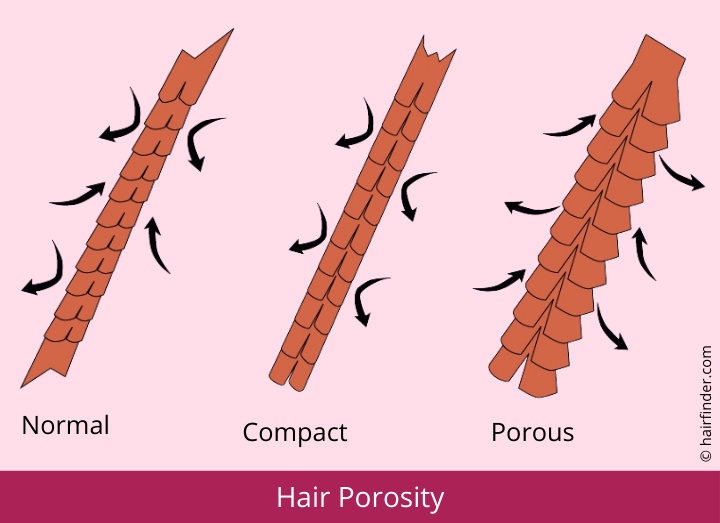Then I learned it's not an insult.
What is Porosity? Porosity is your hairs ability to absorb water. Think of it as how easily water passes into and out of the hair shaft. In general, curly hair is more porous that straight hair. Chemical processing, excessive manipulation (i.e., harsh combing, friction) and excessive heat treatments can also cause damage to the cuticle layer (increasing porosity of the hair).
Normal Porosity: The cuticle layer is neither flat nor completely raised, it allows water into the hair shaft as needed.
Low Porosity: The cuticle layer lies flat and therefore it is more difficult for water to enter or leave the hair shaft. Low porosity hair holds moisture well but it is not easily absorbed. As a result most products will sit on the hair shaft, causing a white sheen or easy build up.
High Porosity: As the cuticle layer is raised and open, the hair absorbs water easily but loses it just as fast. Highly porous hair becomes dry quickly, can break easily when soaking wet and is easily damaged.  |
| From left to right: normal, low, highly porous. Photo from hairfinder.com |
How do I know if my hair is porous?
You'll need a glass of water and a clean strand of your hair.
Allow the water to still and drop the strand of hair into the glass.
If the hair sinks after after 3-5 minutes, your hair is highly porous.
If your hair takes a while to sink your hair has low porosity.
Now that I know...how do I care for Low Porosity Hair?
1. Apply product to damp hair. After a wash, your hair is thoroughly saturated with water. So allow it to air dry and release some of the water before applying product. This way your hair shaft has room to absorb the product.
2. Using heat to open up the cuticle. When applying your deep conditioner, using heat is very important to help open up the cuticle to let the moisture get in.
3. Squeeze out the excess. Sometimes when I apply too much product, it turns my hair white or takes a long time to dry. I'll use a paper towel to blot off the excess. Or run your fingers down sections of your hair (sandwiching it) to remove the excess.
4. You LOVE products that contain humectants. Humectents (i.e., glycerin) help to draw in and retain moisture to your locs. I mix water and glycerin in a spray bottle, to dampen my hair before I seal it.
[Note: I have low porosity hair and I always use to get frustrated with product application because my hair never seemed to absorb it. I use to get product build so quickly! Ever since I learned about the porosity of my hair, I am able to better care for it. All of these tips have helped to make the biggest difference! My hair is better moisturized and stays moisturized longer.]
Click here, to read more on how to care for low porosity hair.
Now that I know...how do I care for High Porosity Hair?
 |
| Highly porous hair Photo from: naturallycurly.com |
2. Moisture and protein treatments. Protein treatments help to repair the hair and patch up the cuticle. Moisturizing conditioning treatments are also very important as well.
3. You DON'T LOVE humectants. Try and avoid products with humectants in humid climates, as it'll aid in taking water in from the atmosphere and contribute to frizziness.
4. Don't detangle hair when soaking wet. This can lead to breakage from the weight of the water absorbed.
Click here, to read more on how to care for high porosity hair.
Now that I know...how do I care for Normal Porosity hair?
Be happy! :)
It will require less maintenance, as your hair is absorbing water into the hair shaft as needed. However, continue to keep a good moisture/protein balance!
End Note
Knowing the porosity of your hair is very important in terms of adapting your regime and maintaining a good moisture balance in your hair. Hope this helped!
Peace. Love. and Afro's.
:)
xx
J


I'm sharing this on my FB page, thanks J.
ReplyDeleteMy high-porosity hair ONLY stays moist from homectants...I seal with oils & butters though.
ReplyDeleteConfused by this article. GLycerin based products are the ONLY thing that keep my hair from drying out like crazy